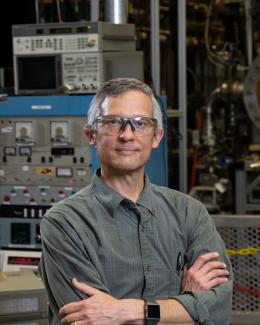Abstract
The technology for producing, accelerating, and shattering large pellets (before injection into plasmas) for disruption mitigation has been under development at the Oak Ridge National Laboratory for several years, including a system on DIII-D that has been used to provide some significant experimental results. The original proof-of-principle testing was carried out using a pipe gun injector cooled by a cryogenic refrig- erator (temperatures ∼8–20 K) and equipped with a stainless steel tube to produce 16.5-mm pellets composed of either pure D2, pure Ne, or a dual layer with a thin outer shell of D2 and core of Ne. Recently, significant progress has been made in the laboratory using that same pipe gun and a new injector that is an ITER test apparatus cooled with liquid helium. The new injector operates at ∼5–8 K, which is similar to temperatures expected with cooling provided by the flow of supercritical helium on ITER. An alterna- tive technique for producing/solidifying large pellets directly from a premixed gas has now been successfully tested in the laboratory. Also, two additional pellet sizes have been tested recently (nomi- nal 24.4 and 34.0 mm diameters). With larger pellets, the number of injectors required for ITER disruption mitigation can be reduced, resulting in less cost and a smaller footprint for the hardware. An attractive option is longer pellets, and 24.4-mm pellets with a length/diameter ratio of ∼3 have been successfully tested. Since pellet speed is the key parameter in determining the response time of a shattered pellet system to a plasma disruption event, recent tests have concentrated on documenting the speeds with different hardware configurations and operating parame- ters; speeds of ∼100–800 m/s have been recorded. The data and results from laboratory testing are presented and discussed, and a simple model for the pellet solidification process is described.






